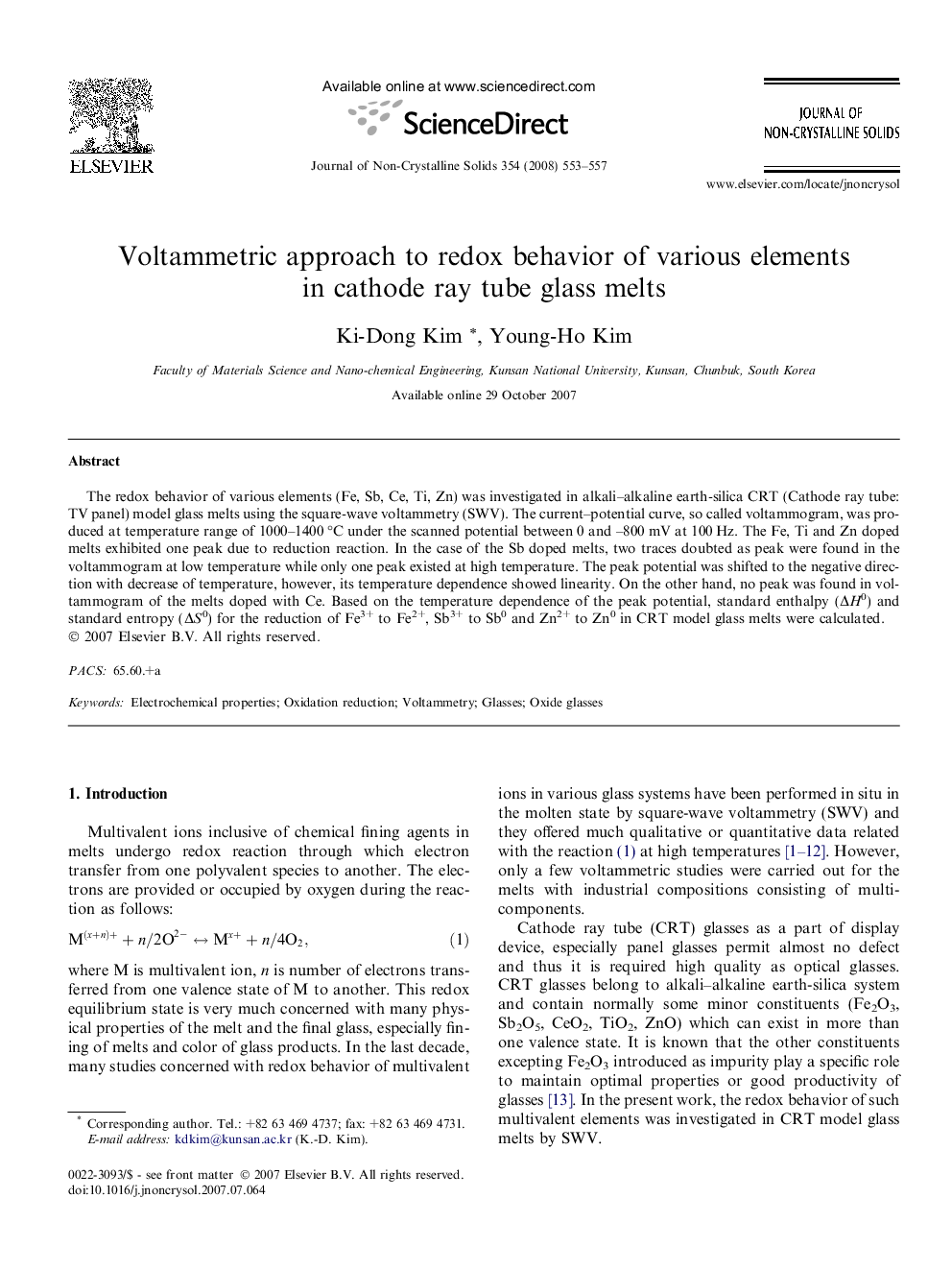| Article ID | Journal | Published Year | Pages | File Type |
|---|---|---|---|---|
| 1485102 | Journal of Non-Crystalline Solids | 2008 | 5 Pages |
The redox behavior of various elements (Fe, Sb, Ce, Ti, Zn) was investigated in alkali–alkaline earth-silica CRT (Cathode ray tube: TV panel) model glass melts using the square-wave voltammetry (SWV). The current–potential curve, so called voltammogram, was produced at temperature range of 1000–1400 °C under the scanned potential between 0 and –800 mV at 100 Hz. The Fe, Ti and Zn doped melts exhibited one peak due to reduction reaction. In the case of the Sb doped melts, two traces doubted as peak were found in the voltammogram at low temperature while only one peak existed at high temperature. The peak potential was shifted to the negative direction with decrease of temperature, however, its temperature dependence showed linearity. On the other hand, no peak was found in voltammogram of the melts doped with Ce. Based on the temperature dependence of the peak potential, standard enthalpy (ΔH0) and standard entropy (ΔS0) for the reduction of Fe3+ to Fe2+, Sb3+ to Sb0 and Zn2+ to Zn0 in CRT model glass melts were calculated.
